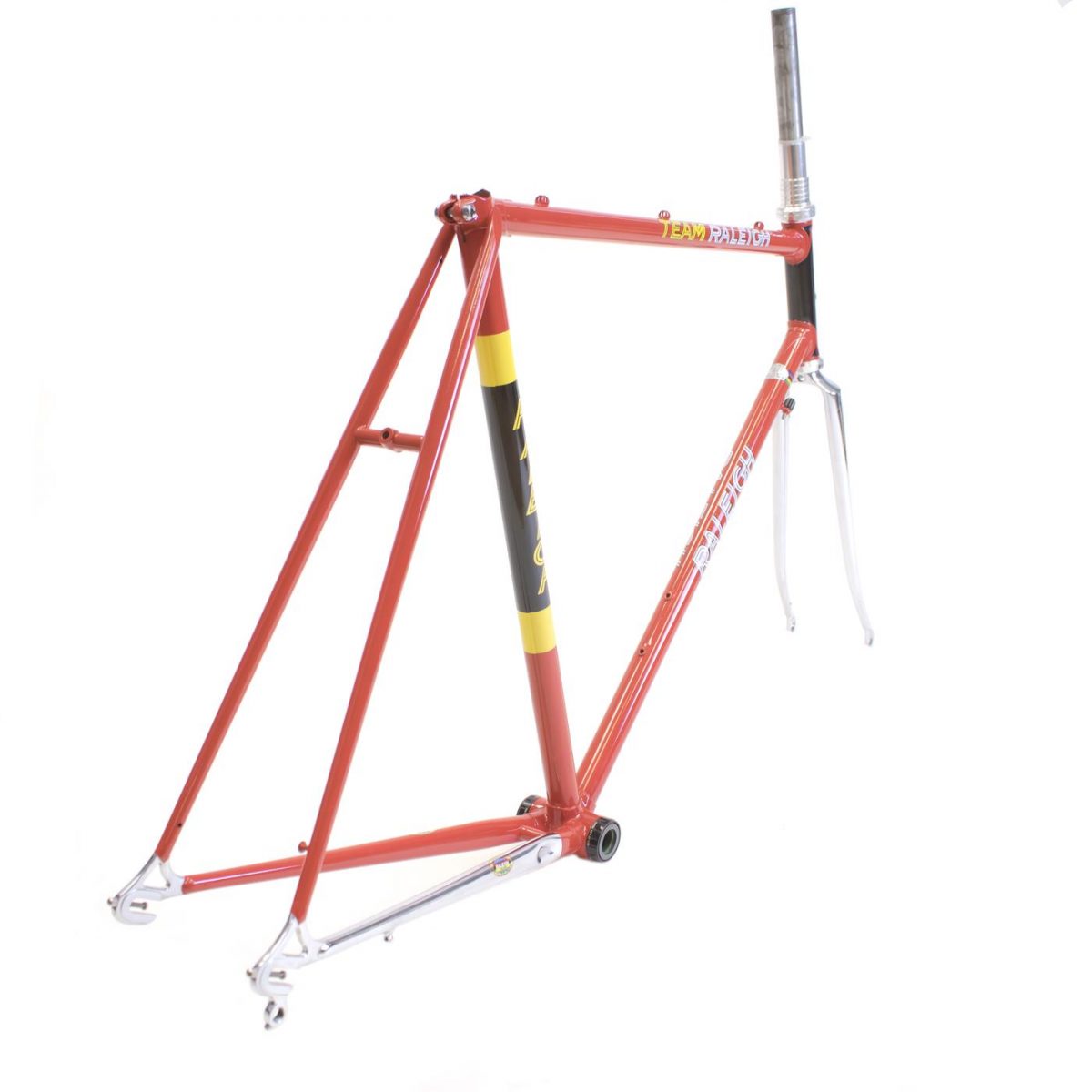There’s nothing which makes a classic bike more of a head turner than chrome plating. Plenty of chroming makes its way through our workshops, so we thought we’d tell you a little about why we do things the way we do…
Chrome plating bicycles is very misunderstood. Most cyclists could be forgiven for thinking that it’s the chrome itself that makes things so shiny. However this couldn’t be further from the truth.
The most important aspect of chrome plating is the polishing work, and it’s this which separates the craftsmen from the industrial chrome platers. Industrial chrome platers are used to polishing heavy, thick metal parts. Now the last time I checked there weren’t many thick heavy parts making up a quality steel frame.
In fact there are many fine details on a bike frame which might be lost if the polishing is deep. Engravings on the dropouts, details on the fork crowns, delicate lug work all require a deft touch or details will be lost. Here’s a few pics of fork crowns. You can see that on the blue frame the fork crown details have been all but polished away!
When it comes to polishing the tubes themselves, even more care is needed. The main tubes of a bike frame are extremely thin and it has been known for a polisher unfamiliar with bike frames to polish a hole through a tube!
Reynolds Tubing often recommended against chrome plating on certain tubesets such as 531SL and 753. Even the chainstays on these frames can be very thin.
So should you get chrome plating on your vintage frame?
On a vintage frame there are several things to consider, as chrome plating on vintage frames is carried out strictly at the owners risk.
A lot will depend on what chroming you’d like. Forks for example are usually not a problem because the fork blades are quite thick. Items like dropouts, fork crowns and lugs are also ok. However I would be very wary of having the main tube chromed and with rear stays its essential they don’t have any rust.
It really is worth paying a little extra to get good chrome plating.



Leave a Reply